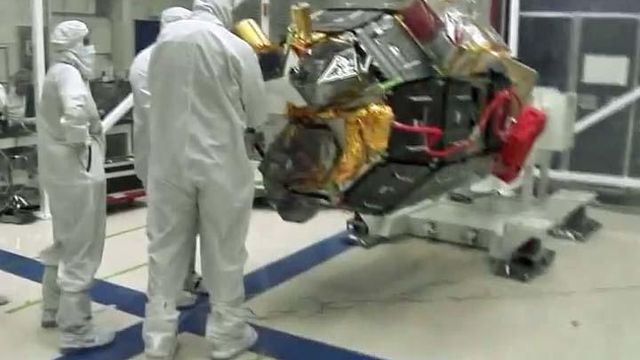Look up Friday for LADEE launch
NASA's Lunar Atmosphere and Dust Environment Explorer (LADEE) is scheduled to launch Friday at 11:27 p.m. EST from Wallops Flight Facility (WFF) about 125 miles from Raleigh on Virginia's eastern shore. This highly anticipated launch is expected to be visible up and down the east coast.
Posted — Updatedshore. This highly anticipated launch is expected to be visible up and down the east coast.
Look to the northeast about a minute after launch for a glimpse of the rocket as it heads for the African coast. Visibility of this night launch will be helped by the new moon.
LADEE will study the lunar atmosphere along with the dust it contains.
Yes, the moon has an atmosphere, but it is an extremely thin one. Each cubic centimeter of moon atmosphere contains about a million molecules. Seems like a lot until you consider Earth’s atmosphere at sea level contains one trillion times as many molecules.
Scientists hope to better understand that extremely thin atmosphere of our only natural satellite and apply that knowledge to how our own works. LADEE will also help explain what the Apollo astronauts saw just above the lunar surface. Was the haze they saw traces of sodium in the atmosphere glowing, or was it dust electrostatically trapped in the atmosphere?
The launch itself is a unique one. This is the first launch of the 5-stage Minotaur V rocket, a derivative of the Peacekeeper ICBM and the first lunar launch from WFF. Still it is hard not to compare LADEE to the Apollo missions.
Both LADEE and the Apollo missions launched eastward over the Atlantic Ocean bound for the same target, but actually the similarities stop there. LADEE will take a much longer path than the Apollo missions in an effort to conserve fuel and reduce costs.
Apollo missions spent a few hours in low Earth orbit and three days completing the trip from the Earth to the moon. 76 hours after launch, Apollo 11 was in lunar orbit.
LADEE will spend 23 days in Earth orbit using the moon’s gravity to widen the elliptical shape of that orbit to prepare for its 5-day trip to the moon. On reaching the moon, an additional 40 to 60 days are required to settle into its very circular science orbit. There LADEE will spend 100 days flying just 31 miles (50 km) from the lunar surface analyzing the atmosphere. LADEE’s orbit will then be gradually lowered until it impacts the moon.
Those months spent refining orbits won't be wasted.
In Earth orbit, the spacecraft will be checked out and baked in. While the lunar orbit is refined to meet science requirements, the Lunar Laser Communication Demonstration (LLCD) instrument on board will be put through its paces.
LLCD will demonstrate laser communications technology that promises to significantly increase data transfer speed from lunar orbit to Earth. A highly reliable infrared laser, similar to those used on Earth in fiber optic systems, transmits data to existing ground telescopes in New Mexico, California and Spain. Test results from LLCD will be used to refine NASA’s Laser Communication Relay Demonstration (LCRD) scheduled for launch in 2017. LCRD will be placed into geostationary orbit and serve as a relay to other satellites or perhaps a lunar base one day.
The North Carolina Museum of Natural Sciences is hosting talks on the LADEE mission during First Friday celebrations at the museum. Dr. Rachel Smith, director of the museum’s Astronomy & Space Observation Research Laboratory will be speaking on lunar exploration at 6 p.m. I’ll be speaking at 7 p.m. on the Wallops Flight Facility and what it takes to get a spacecraft atop a former ICBM to the moon. Come by and say hi!
• Credits
Copyright 2024 by Capitol Broadcasting Company. All rights reserved. This material may not be published, broadcast, rewritten or redistributed.






